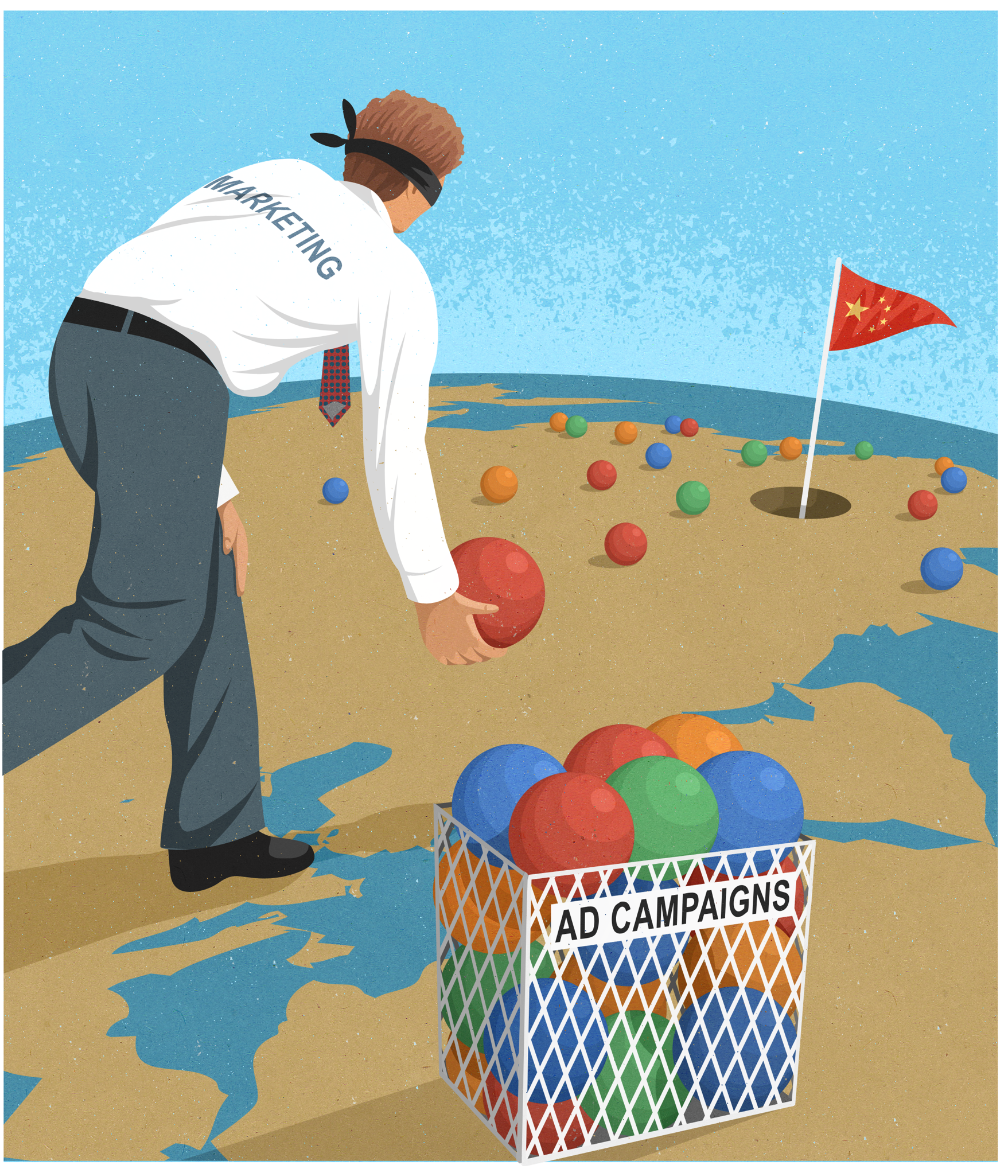Illustration by John Holcroft
There’s huge potential in engaging diverse audiences, but also potential for disaster.
It’s safe to say Burberry missed the mark with their 2019 Chinese New Year campaign. While the brand thought they portrayed “togetherness” in a faux multi-generational family portrait, Chinese consumers perceived the models’ grim expressions as downright “creepy,” even likening the scene to Asian horror films. “A new Addams family with Chinese characteristics,” quipped one Twitter user. Jing Daily, a leading digital publication covering luxury trends in China, called the ad “another bad taste, tone-deaf instance of Western luxury brands completely missing the point in China.”
https://twitter.com/Burberry/status/1080782073445666817
Burberry isn’t the only brand to make a misstep with Chinese consumers as of late. Luxury jewellery brand Bvlgari released their 2019 Chinese New Year campaign with an ill-advised attempt at a pun involving the pronunciation of the Mandarin word for pig (“zhu”), which sounds somewhat like “jew” in English, and the English word “jewellery.” Things took a sideways turn when the brand released its campaign with a headline that translated into “Be my bright JEW in the palm,” managing to miss the mark with Chinese consumers and insult the Jewish community in one fell swoop.
China is the world’s second-largest economy with the largest middle class in the world. Its retail sales are poised to surpass the US at practically any moment and Retail TouchPoints projects Chinese consumers will spend US $349 billion per year overseas by 2020. It’s no wonder brands are eager to ingratiate themselves with Chinese consumers.
Retailers are similarly realizing the largely untapped buying power of Muslim consumers (an estimated US$254 billion market), as well as Latinos and Africans. And they aren’t only struggling to connect with ethnic and religious populations. Marketers have never been more excited to exude Pride now that LGBTQ+ buying power clocks in at least US$917 billion. Meanwhile, a surge in female economic power sees brands hopping aboard the feminist bandwagon with decidedly mixed results (pink “beer for girls,” anyone?)
Each culture comes with its own unique set of challenges and complicated histories. The worst failed campaigns occur when marketers play to superficial stereotypes rather than actually taking the time to research and understand a demographic. Not all women like pink, targeting Latinos isn’t as easy as translating an ad into Spanish, and you can’t just throw a Chinese grandma into a group of sullen models and call it a day.
Research shows that mass stereotyping in marketing doesn’t work — particularly in a new data-driven era where mass personalization is possible. Articulate, a leading marketing agency for tech clients including Microsoft and Hewlett-Packard, writes that “treating such generalisations as gospel is a sure-fire way of creating shoddy campaigns.”
Not only is catering to stereotypes a bad idea, so is treating a large demographic as one entity. Many smaller demographics exist within the Chinese, Muslim, African, female, and LGBTQ+ communities.
There are as many as 2,000 languages spoken across Africa and conditions and cultures vary widely between countries. Latinos often view themselves as uniquely bi-cultural, responding best to a mix of languages and cultural cues in a single campaign. Muslims form the majority in more than 50 countries around the world, and the minority in many others, with each population having its own hyper-localized values. What may work for Muslims in Egypt may not resonate with Muslims from Saudi Arabia or Pakistan. In fact, local culture can be a much larger influence than religion.
While it’s always good advice to actually include professionals from different cultures in the development process, it’s now possible to gain significant insights into a target audience with the use of statistics. The smart use of data is why tech companies like Facebook and Google have managed to be hugely successful across many diverse populations. Another strategy is to include influencers from the target demographic in your campaign. Not only do these influencers have an ability to connect with your audience on a deeper level, they may catch any potential issues with a campaign before it’s shared.
When attempting to capitalize on cultural trends and traditions it’s best not to focus on selling, but rather being part of a movement or celebration. Overemphasizing your product or service can come across as opportunistic or disingenuous. For example, many brands misstep by handing out red envelopes for Chinese New Year that only contain promotional materials or candies. These envelopes traditionally contain money or other small valuable gifts. A smart brand would place a small item of value in the envelopes to make sure their gift is culturally appropriate rather than transparently opportunistic.
Brands should also aim to embrace diversity internally on a continuous basis. This is the best way to not seem like you’re simply jumping on the bandwagon or attempting to appropriate culture for a profit. The distinction between brands who truly embrace and advocate for change and those who show up once a year is particularly noticeable during Pride. In the words of one top tweet from Pride 2017:
happy pride month to everyone except corporations that disenfranchise lgbtq ppl & exploit workers behind limited edition rainbow merchandise
— . (@jaboukie) June 2, 2017
One effective way to show true support for a community is highlighting internal stories. Gap successfully took part in GLAAD’s #GotYourBack campaign by sharing videos of 13 employees sharing their coming out experiences. Gap even has a business resource group called Gay Gap Employees, Allies and Resources (GEAR), showing their commitment to inclusion and diversity behind the scenes. Another strategy is to aim to make actual impact by partnering with a non-profit, preferably year-round rather than for a one-time campaign.
In an increasingly globalized world, brands can no longer afford to market through the white, heterosexual male gaze. It’s also not enough to superficially capitalize on cultural holidays and trends without fully committing to getting to know a demographic and, ideally, becoming an advocate for their interests. Consumers are smarter than ever; they won’t be swayed by a splash of festive colour or clever pun anymore. Brands who want to have global audiences must truly become global themselves.








